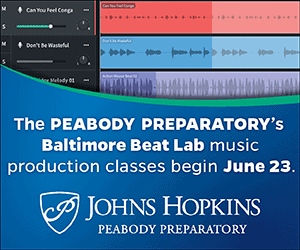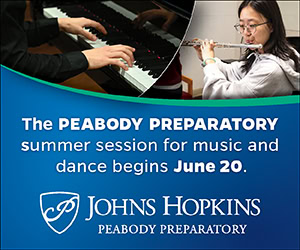/ News Posts / Music Listening for Student Well-Being
Music Listening for Student Well-Being
By Dr. Giuliana Conti and Amy Sloan,
sponsored by NAfME Corporate Member Music Workshop
Teachers are constantly striving to create a positive and supportive learning environment for our students. However, we know that many of them grapple with various challenges that can hinder their academic performance and overall well-being. There is growing need for teachers to focus on student well-being holistically in order to unlock learning, and one powerful technique is through music listening integrated across any curriculum. A growing body of research provides compelling evidence that music listening can have a profound impact on students’ mental, emotional, and cognitive health, while helping teachers offer guidance to students on skills like emotional self-regulation and social integration.
Understanding Well-Being
Well-Being, according to the World Health Organization is “a positive state experienced by individuals and societies. Similar to health, it is a resource for daily life and is determined by social, economic and environmental conditions. Well-being encompasses quality of life and the ability of people and societies to contribute to the world with a sense of meaning and purpose.” Well-being is bigger than the attempt to not suffer, or to mitigate misery. It involves a sense of purpose, fulfillment, and ideally, flourishing.
One helpful way to think about well-being, how it can be identified, and even a catchy acronym for teachers to remember in class, is through the PERMA model by Martin Seligman, a psychologist from Penn State University who is also the “father” of Positive Psychology. The model identifies five facets of well-being that teachers can identify and address in themselves and students:
Positive emotions
Engagement
Relationships
Meaning
Achievement
Teachers can use this acronym to identify what barriers a student might be facing, like social integration or not connect with the learning material, and then focus on the Relationships of that student with others, and how that students defines Achievement, including how they can set more realistic goals. Similarly, teachers could identify a trend in their class around students not engaging with the curriculum, and prioritize activities that pique students’ interests more, increasing their engagement and learning investment.
Student Challenges that Require Teacher Attention to Well-Being
Post-COVID research on student learning and behavior shows an increasing need for student well-being, with the National Center for Education Statistics reporting 83% of public schools agree that the COVID-19 pandemic and its lingering effects continue to negatively impact the socioemotional development and behavior of students. The mental health challenges students face are not new, or unique to COVID, but they are stitistically higher than years prior, with increased rates of adverse childhood experiences, toxic stress, trauma, depression, hypervigilance, latent vulnerability, and social thinning. All of which can continue to disrupt a student’s life well into adulthood.
As trained mandated reporters, teachers are often able to detect changes in student tone and behavior in case a student needs professional support or intervention. Post-COVID, however, many teachers are burning out from the gray area between behavior that warrants disciplinary or administrative support, and the dramatic increase in day-to-day behavior changes that are disrupting the learning, socializing, and age-appropriate development of students across K-12 grade levels. The American Academy of Pediatrics has declared children’s mental health as a national emergency, with adverse childhood experiences being the greatest unaddressed public health threat currently facing the country today. The PERMA model is a tool teachers can use to feel more capable of identifying what kind of barriers students face in their own pursuit of well-being, and how instruction can be adapted to support that student within the context of the teacher’s professional responsibilities.
Music Listening as a Tool in Class
Music listening offers significant cognitive, emotional, social, and physiological benefits that can enhance well-being, helping students build mental and emotional management skills as they develop that extend beyond the classroom. For teachers, this means expanding students’ awareness of music in the world while honoring their existing music preferences in class. It is not so much the style or genre of music that matters, but the way it makes the listener feel and how it connects to them personally. The first step to applying music listening in class therefor involves asking students about the music they enjoy and how they use it to meet social or emotional needs. This fosters self-reflection, supports student agency, and helps you select music that suits your classroom.
PERMA and Music Listening
Music Listening promotes the five facets of well-being in many direct and indirect ways. The following section includes some of the evidence for music listening as a powerful technique for students to cultivate well-being, which you can guide as their teacher and a consistent musical figure in their lives.
Positive Emotions:
Emotional regulation
Active music listening can stimulate the brain’s prefrontal cortex, employing it to manage emotional responses from the amygdala. Listening to pleasant music also stimulates the release of neurotransmitters like serotonin, dopamine, and oxytocin, which can help to regulate mood and elicit feelings such as joy and relaxation short term and over time.
Stress reduction
Research shows that music can alleviate stress and anxiety physiologically (regulating nervous system responses such as heart rate, blood pressure, and stress-related hormones such as cortisol) and psychologically (reducing nervousness, feelings of worry, and restlessness). This is largely because music can cause subconscious synchronization of body rhythms like breathing and heart rate, leading to a reduction in stress-causing stimuli.
Engagement:
Neuroplasticity
Music making and listening activate various pathways in the brain using multiple sensory modalities, helping it to improve neuroplasticity, which is the brain’s ability to change and rewire in response to learning experiences and adapt to new circumstances. Neuroplasticity underlies learning, memory formation, skill acquisition, and more, making it relevant to many aspects of academic success.
Attention and focus
Music has been shown to improve attention control more effectively than other forms of attention control interventions. Attentiveness is a fundamental component of engagement, and sharpening attentiveness is vital to academic success as it can improve one’s capacity for active listening, task concentration, and visual focus.
Relationships:
Social integration and belonging
Both music listening and participatory music making can help youth build social relatedness to feel belonging in a group, connection with others, and understanding of others’ thoughts. Through shared musical experiences, students learn essential components of social integration such as the value of cooperation, empathy, and mutual respect.
Empathy and intercultural understanding
Music listening has the capacity to increase empathy, and even passively listening to music from unfamiliar cultures has been shown to positively affect listeners’ attitudes towards people of those cultures (especially for empathetic individuals). Fostering tolerance and social connection by engaging with diverse musical traditions can encourage students to appreciate and celebrate differences, promoting a more empathetic and inclusive worldview.
Meaning:
Identity formation
Music can be a valuable resource for identity construction throughout adolescence, serving as a means for youth to reflect on and validate their personalities, bridge the transition from youth to adulthood, explore facets of identity like gender and sexuality, and understand personal identity in social and cultural contexts.
Creative expression
Experiences with different types of music, especially through music listening, can increase the capacity for creativity in developing young people. Even background music can provide psychological restoration, mood enhancement, and cognitive processing to boost individual originality in creative thinking and behavior.
Achievement:
Self-esteem
Due to the links between music and positive emotions, identity, and social connectedness, music listening can serve as a tool for self-enhancement and self-esteem. Empathetic responses to emotionally positive or empowering music can provide mood enhancement and individual feelings of empowerment while expressive music can help to validate listeners’ individual and social identities to feel confidence and belonging, increasing positive views of the self.
Language development and ELA skills
The interrelated music and language systems in the brain allow musical properties to beneficially affect skills such as language comprehension, semantic processing, and understanding of grammar and syntax, providing a foundation for literacy and English language arts outcomes. Through hearing components like rhythm and melody, even informal musical experiences in early childhood can promote the development of linguistic competencies such as vocabulary and grammar.
Next Steps
By incorporating music listening into your classrooms and encouraging students to engage with music outside of school, you can help them navigate the challenges they face and help promote their overall well-being. Music has the power to transform students’ lives, empowering them to thrive both academically and personally, and music listening integrated into any curriculum can help students connect their out-of-school and in-school lives. This connection can foster trust, safety, and a higher investment in your guidance, which can grow immensely when you ask and apply their musical interests into their learning environment. Start by opening a dialogue with your students about why and when they listen to music, what they listen to, and how you could start to bring their tastes into the curriculum more. If you want further guidance, Music Workshop’s professional development program on Music for Well-Being, created specifically for music teachers, is another great next step.
About the authors:
 Dr. Giuliana Conti is the Director of Education and Equity at Music Workshop where she manages their new online, self-paced professional development courses on Music for Well-Being, and ensures the company’s overall education strategies align with the culturally-responsive content teachers and students need. After teaching elementary music for five years and developing a global music curriculum for her students, she graduated from the University of Washington with her MA and PhD in Music Education, focusing on the intersection of music listening, ethnomusicology, child development, and social justice. She is a passionate leader with public speaking and teacher training experiences which push her to fight for the resources that cut to the core of the issue and help move teachers forward. She plays blues, folk, and rock fiddle with several bands, having originally studied classical viola for 15 years.
Dr. Giuliana Conti is the Director of Education and Equity at Music Workshop where she manages their new online, self-paced professional development courses on Music for Well-Being, and ensures the company’s overall education strategies align with the culturally-responsive content teachers and students need. After teaching elementary music for five years and developing a global music curriculum for her students, she graduated from the University of Washington with her MA and PhD in Music Education, focusing on the intersection of music listening, ethnomusicology, child development, and social justice. She is a passionate leader with public speaking and teacher training experiences which push her to fight for the resources that cut to the core of the issue and help move teachers forward. She plays blues, folk, and rock fiddle with several bands, having originally studied classical viola for 15 years.
 Amy Sloan is the Program Manager at Music Workshop and recently graduated from the University of Oregon Clark Honors College with a major in Psychology and minors in Music and Business Administration. Born and raised in Portland, Oregon, Amy grew up playing piano, guitar, and ukulele. With seven years of experience leading and coordinating community center camps for kids aged 3-12 and six years of experience as a volunteer and lead volunteer at a youth crisis hotline, Amy is passionate about the role of music in child development and using a trauma-informed approach to helping others. Amy has led and been involved in community outreach and fundraising events, advocacy and research projects, and public speaking opportunities including TEDx.
Amy Sloan is the Program Manager at Music Workshop and recently graduated from the University of Oregon Clark Honors College with a major in Psychology and minors in Music and Business Administration. Born and raised in Portland, Oregon, Amy grew up playing piano, guitar, and ukulele. With seven years of experience leading and coordinating community center camps for kids aged 3-12 and six years of experience as a volunteer and lead volunteer at a youth crisis hotline, Amy is passionate about the role of music in child development and using a trauma-informed approach to helping others. Amy has led and been involved in community outreach and fundraising events, advocacy and research projects, and public speaking opportunities including TEDx.
Interested in reprinting this article? Please review the reprint guidelines.
The National Association for Music Education (NAfME) provides a number of forums for the sharing of information and opinion, including blogs and postings on our website, articles and columns in our magazines and journals, and postings to our Amplify member portal. Unless specifically noted, the views expressed in these media do not necessarily represent the policy or views of the Association, its officers, or its employees.
Published Date
December 12, 2024
Category
- Lifelong Learning
- Research in Music Education
- Social Emotional Learning
- Teacher Self Care
Copyright
December 12, 2024. © National Association for Music Education (NAfME.org)






